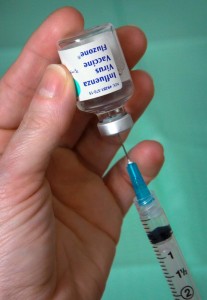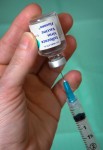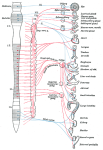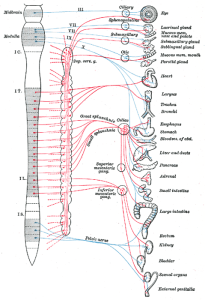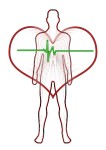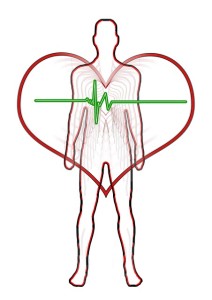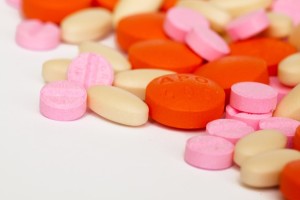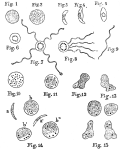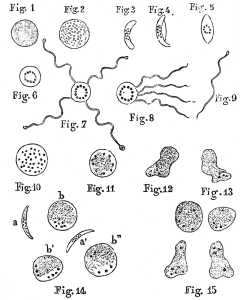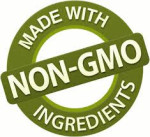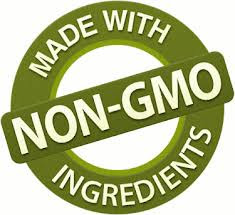by Why Don’t You Try This?.com:
Baby Food ~ Genetically Engineered Ingredients
Nabisco (Phillip Morris)
-Arrowroot Teething Biscuits -Infant formula Carnation Infant Formulas(Nestle) -AlSoy -Good Start -Follow-Up -Follow-Up Soy
Enfamil Infant Formulas (Mead Johnson)
-Enfamil with Iron -Enfamil Low Iron -Enfamil A.R. -Enfamil Nutramigen -Enfamil Lacto Free -Enfamil 22 -Enfamil Next step (soy and milk-based varieties) -Enfamil Pro-Soybee
Isomil Infant Formulas (Abbot Labs)
-Isomil Soy -Isomil Soy for Diarrhea -Similac(Abbot Labs) -Similac Lactose Free -Similac with Iron -Similac Low Iron -Similac Alimentum
Baking ~ Genetically Engineered Ingredients
Aunt Jemima (Quaker)
-Complete Pancake & Waffle Mix -Buttermilk Pancake & Waffle Mix -Cornbread Mix -Easy Mix Coffee Cake
Betty Crocker (General Mills)
-Pie Crust Mix -Original Pancake Mix -Complete Pancake Mix -Buttermilk Complete Pancake Mix -Muffin Mixes -Banana Nut -Lemon Poppy Seed -Blueberry -Wild Blueberry -Chocolate Chip -Apple Streusel -Quick Bread Mixes Banana -Cinnamon Streusel -Lemon Poppy Seed -Cranberry Orange -Gingerbread -Cookie Mixes Chocolate Chip -Double Chocolate Chunk -Sugar -Peanut Butter
Bisquik (Betty Crocker/General Mills)
-Original -Reduced Fat -Shake ‘n Pour Pancake Mix -Shake ‘n Pour Buttermilk Pancake Mix -Shake ‘n Pour Blueberry Pancake Mix
Duncan Hines (Aurora Foods)
-Muffin Mixes -Kellogg’s All-Bran Apple Cinnamon -Kellogg’s All-Bran Blueberry -Blueberry -Blueberry Crumb -Chocolate Chip
Hungry Jack (Pillsbury)
-Buttermilk Pancake Mix -Extra Light & Fluffy Pancake Mix (all varieties) -Jiffy -Corn Muffin Mix
-Blueberry Muffin Mix -Raspberry Muffin Mix -Pie Crust Mix
Mrs. Butterworths (Aurora Foods)
-Complete Pancake Mix -Buttermilk Pancake Mix
Pepperidge Farms (Campbell’s)
-Buttermilk Pancake Mix -Pillsbury -Quick Bread & Muffin Mixes -Blueberry -Chocolate Chip -Banana
-Cranberry -Lemon Poppyseed -Nut -Hot Roll Mix -Gingerbread
Bakers (Kraft/Phillip Morris)
-Unsweetened Chocolate -Semi-Sweet Chocolate -German Sweet Chocolate -White Chocolate -Hershey’s -Semi-Sweet Baking Chips -Milk Chocolate Chips -Mini Kisses -Nestle -Toll House Semi-Sweet Chocolate Chips -Milk Chocolate Chips -White Chocolate -Butterscotch Chips -Semi-Sweet Chocolate Baking Bars
Bread ~ Genetically Engineered Ingredients
Holsum (Interstate Bakeries)
-Holsum Thin Sliced -Roman Meal -12 Grain -Round Top -Home Pride -Buttertop White -Buttertop Wheat
Pepperidge Farms (Campbell’s)
-Cinnamon Swirl -Light Oatmeal -Light Wheat -100% Whole Wheat -Hearty Slices -7 Grain -9 Grain -Crunchy Oat -Whole Wheat -Light Side -Oatmeal -Wheat -7 Grain -Soft Dinner Rolls -Club Rolls -Sandwich Buns -Hoagie Rolls
Thomas’ (Bestfoods)
-English Muffins Original -Cinnamon Raisin -Honey Wheat -Oat Bran -Blueberry -Maple French Toast -Toast-r-Cakes Blueberry -Toast-r-Cakes Corn Muffins
Wonder (Interstate Bakeries)
-White Sandwich Bread -Country Grain -Buttermilk -Thin Sandwich -Light Wheat -100% Stoneground Wheat
-Fat Free Multigrain -Premium Potato -Beefsteak Rye -Wonder Hamburger Buns
Breakfast ~ Genetically Engineered Ingredients
Kellogg’s
-Pop Tarts (all varieties) -Pop Tarts Snack Stix (all) -Nutri-Grain Bars (all) -Nutri-Grain Fruit Filled Squares (all) -Nutri-Grain Twists (all) -Fruit-Full Squares (all)
Nabisco (Nabisco/Phillip Morris)
-Fruit & Grain Bars (all varieties) -Nature Valley (General Mills) -Oats & Honey Granola Bars
-Peanut Butter Granola Bars -Cinnamon Granola Bars
Pillsbury (General Mills)
-Toaster Scrambles & Strudels (all varieties)
Quaker
-Chewy Granola Bars (all varieties) -Fruit & Oatmeal Bars (all varieties) -Aunt Jemima Frozen Waffles -Buttermilk -Blueberry
Eggo Frozen Waffles (Kellogg’s)
-Homestyle -Buttermilk -Nutri-Grain Whole Wheat -Nutri-Grain Multi Grain -Cinnamon Toast -Blueberry -Strawberry -Apple Cinnamon -Banana Bread
Hungry Jack Frozen Waffles (Pillsbury/General Mills)
-Homestyle -Buttermilk
Cereal ~ Genetically Engineered Ingredients
General Mills
-Cheerios -Wheaties -Total -Corn Chex -Wheat Chex -Lucky Charms -Trix -Kix -Golden Grahams -Cinnamon Grahams -Count Chocula -Honey Nut Chex -Frosted Cheerios -Apple Cinnamon Cheerios -Multi-Grain Cheerios
-Frosted Wheaties -Brown Sugar & Oat Total -Basic 4 -Reeses Puffs -French Toast Crunch
Kellogg’s
-Frosted Flakes -Corn Flakes -Special K -Raisin Bran -Rice Krispies -Corn Pops -Product 19 -Smacks
-Froot Loops -Marshmallow Blasted Fruit Loops -Apple Jacks -Crispix -Smart Start -All-Bran -Complete Wheat Bran -Complete Oat Bran -Just Right Fruit & Nut -Honey Crunch Corn Flakes -Raisin Bran Crunch
-Cracklin’ Oat Bran
Country Inn Specialties (all varieties)
-Mothers Cereals (Quaker) -Toasted Oat Bran -Peanut Butter Bumpers -Groovy Grahams -Harvest Oat Flakes
-Harvest Oat Flakes w/Apples & Almonds -Honey Round Ups
Post (Kraft-Phillip Morris)
-Raisin Bran -Bran Flakes -Grape Nut Flakes -Grape Nut O’s -Fruit & Fibre date, raisin and walnut
-Fruit & Fibre peach, raisin and almond -Honey Bunch of Oats -Honey Nut Shredded Wheat -Honey Comb
-Golden Crisp -Waffle Crisp -Cocoa Pebbles -Cinna-Crunch Pebbles -Fruity Pebbles -Alpha-Bits -Post Selects Cranberry Almond -Post Selects Banana Nut Crunch -Post Selects Blueberry Morning -Post Selects Great Grains Quaker -Life -Cinnamon Life -100% Natural Granola -Toasted Oatmeal -Toasted Oatmeal Honey Nut -Oat Bran -Cap’n Crunch -Cap’n Crunch Peanut Butter Crunch -Cap’n Crunch Crunchling Berries
Chocolate ~ Genetically Engineered Ingredients
Cadbury (Cadbury/Hershey’s)
-Mounds -Almond Joy -York Peppermint Patty -Dairy Milk -Roast Almond -Fruit & Nut -Hershey’s -Kit-Kat -Reese’s Peanut Butter Cups -Mr. Goodbar -Special Dark -Milk Chocolate -Kisses -Symphony
Kraft (Kraft/Phillip Morris)
-Toblerone (all varieties) -Mars -M&M (all varieties) -Snickers -Three Musketeers -Milky Way -Twix
Nestle
-Crunch -Milk Chocolate -Chunky -Butterfinger -100 Grand
Carnation (Nestle)
Hot Cocoa Mixes:
-Rich Chocolate -Double Chocolate -Milk Chocolate -Marshmallow Madness -Mini Marshmallow -No Sugar
Hershey’s
-Chocolate Syrup -Special Dark Chocolate Syrup -Strawberry Syrup
Nestle
-Nesquik -Strawberry Nesquik
Swiss Miss (ConAgra)
-Chocolate Sensation -Milk Chocolate -Marshmallow Lovers -Marshmallow Lovers Fat Free -No Sugar Added
Condiments ~ Genetically Engineered Ingredients
Del Monte (Nabisco/Phillip Morris)
-Ketchup -Heinz -Ketchup (regular & no salt) -Chili Sauce -Cocktail Sauce -Heinz 57 Steak Sauce
Hellman’s (Bestfoods)
-Real Mayonnaise -Light Mayonnaise -Low-Fat Mayonnaise
Hunt’s (ConAgra)
-Ketchup (regular & no salt) -KC Masterpiece -Original BBQ sauce -Garlic & Herb Marinade -Honey Teriyaki Marinade
Kraft (Kraft/Phillip Morris)
-Miracle Whip (all varieties) -Kraft Mayonnaise (all) -Thick & Spicy BBQ sauces (all varieties) -Char Grill BBQ sauce -Honey Hickory BBQ sauce
Nabisco (Nabiso/Phillip Morris)
-A-1 Steak Sauce -Open Pit (Vlasic/Campbells) -BBQ sauces (all) -Chi-Chi’s (Hormel) -Fiesta Salsa (all varieties) -Old El Paso (Pillsbury) -Thick & Chunky Salsa -Garden Pepper Salsa -Taco Sauce -Picante Sauce
Ortega (Nestle)
-Taco Sauce -Salsa Prima Homestyle -Salsa Prima Roasted Garlic -Salsa Prima 3 Bell Pepper -Thick & Chunky Salsa
Pace (Campbells)
-Chunky Salsa -Picante Sauce
Tostitos Salsa (Frito-Lay/Pepsi)
-All Natural -All Natural Thick & Chunky -Roasted Garlic -Restaurant Style
Cookies ~Genetically Engineered Ingredients
Delicious Brands (Parmalat)
-Animal Crackers -Ginger Snaps -Fig Bars -Oatmeal -Sugar-Free Duplex -Honey Grahams -Cinnamon Grahams
-Fat Free Vanilla Wafers -English Toffee Heath Cookies -Butterfinger Cookies -Skippy Peanut Butter Cookies
Famous Amos (Keebler/Flowers Industries)
-Chocolate Chip -Oatmeal Raisin -Chocolate Sandwich -Peanut Butter Sandwich -Vanilla Sandwich -Oatmeal Macaroon Sandwich
Frookies (Delicious Brands/Parmalat)
-Peanut Butter Chunk -Chocolate Chip -Double Chocolate -Frookwich Vanilla -Frookwich Chocolate -Frookwich Peanut Butter -Frookwich Lemon -Funky Monkeys Chocolate -Ginger Snaps -Lemon Wafers
Keebler (Keebler/Flowers Industries)
-Chips Deluxe -Sandies -E.L. Fudge -Soft Batch Chocolate Chip -Golden Vanilla Wafers -Droxies -Vienna Fingers -Fudge Shoppe Fudge Stripes -Fudge Shoppe Double Fudge & Caramel -Fudge Shoppe Fudge Stix
-Fudge Shoppe Peanut Butter Fudge Stix -Country Style Oatmeal -Graham Originals -Graham Cinnamon Crisp
-Graham Chocolate -Graham Honey Low Fat -Crème Filled Wafers -Chocolate Filled Wafers
Nabisco (Nabisco/Phillip Morris)
-Oreo,(all varieties) -Chips Ahoy!(all varieties) -Fig Newtons (and all Newtons varities) -Lorna Doone
-Nutter Butters -Barnum Animal Crackers -Nilla Wafers -Nilla Chocolate Wafers -Pecanz Shortbread -Family Favorites Oatmeal -Famous Wafers -Fudge Covered Mystic Sticks -Honey Maid Graham Crackers -Honey Maid Cinnamon Grahams -Honey Maid Chocolate Grahams -Honey Maid Oatmeal Crunch -Teddy Grahams -Teddy Grahams Cinnamon -Teddy Grahams Chocolate -Teddy Grahams Chocolate Chips -Café Cremes Vanilla -Café Crème Cappuccino
Pepperidge Farm (Campbell’s)
-Milano -Mint Milano -Chessmen -Bordeaux -Brussels -Geneva -Chocolate Chip -Lemon Nut -Shortbread -Sugar -Ginger Men -Raspberry Chantilly -Strawberry Verona -Chocolate Mocha Salzburg -Chocolate Chunk Chesapeake -Chocolate Chunk Nantucket -Chocolate Chunk Sausalito -Oatmeal Raisin Soft Baked
Sesame Street (Keebler)
-Cookie Monster -Chocolate Chip -Chocolate Sandwich -Vanilla Sandwich -Cookie Pals -Honey Grahams
-Cinnamon Grahams -Frosted Grahams
Snack Wells (Nabisco/Phillip Morris)
-Devil’s Food -Golden Devil’s Food -Mint Crème -Coconut Crème -Chocolate Sandwich -Chocolate Chip -Peanut Butter Chip -Double Chocolate Chip
Crackers ~ Genetically Engineered Ingredients
Keebler (Keebler/Flowers Industries)
-Town House -Club -Munch ‘Ems (all varieties) -Wheatables -Zesta Saltines -Toasteds (Wheat, Onion, Sesame & Butter Crisps) -Snax Stix (Wheat, Cheddar & original) -Harvest Bakery (Multigrain, Butter, Corn Bread)
Nabisco (Nabisco/Phillip Morris)
-Ritz (all varieties) -Wheat Thins (all) -Wheatsworth -Triscuits -Waverly -Sociables -Better Cheddars -Premium Saltines (all) -Ritz Snack Mix (all) -Vegetable Flavor Crisps -Swiss Cheese Flavor Crisps -Cheese Nips (all) -Uneeda Biscuits
Pepperidge Farm (Campbell’s)
-Butter Thins -Hearty Wheat -Cracker Trio -Cracker Quartet -Three Cheese Snack Stix -Sesame Snack Stix
-Pumpernickel Snack Stix -Goldfish (original, cheddar, parmesan, pizza, pretzel) -Goldfish Snack Mix (all)
Red Oval Farms (Nabisco/Phillip Morris)
-Stoned Wheat Thin (all varieties) -Crisp ‘N Light Sourdough Rye -Crisp ‘N Light Wheat Sunshine (Flowers Industries) -Cheeze-It (original & reduced fat) -Cheeze-It White Cheddar -Cheeze-It Party Mix -Krispy Original Saltines
Frozen Dinners ~ Genetically Engineered Ingredients
Banquet (ConAgra)
-Pot Pies (all varieties) -Fried Chicken -Salisbury Steak -Chicken Nugget Meal -Pepperoni Pizza Meal
Budget Gourmet (Heinz)
-Roast Beef Supreme -Beef Stroganoff -Three Cheese Lasagne -Chicken Oriental & Vegeatble -Fettuccini Primavera
Green Giant (Pillsbury)
-Rice Pilaf with Chicken Flavored Sauce -Rice Medley with Beef Flavored Sauce -Primavera Pasta
-Pasta Accents Creamy Cheddar -Create-a-Meals Parmesan Herb Chicken -Cheesy Pasta and Vegetable
-Beef Noodle -Sweet & Sour -Mushroom Wine Chicken
Healthy Choice (ConAgra)
-Stuffed Pasta Shells -Chicken Parmagiana -Country Breaded Chicken -Roast Chicken Breast -Beef Pot Roast -Chicken & Corn Bread -Cheese & Chicken Tortellini -Lemon Pepper Fish -Shrimp & Vegetable -Macaroni & Cheese
Kid Cuisine (ConAgra)
-Chicken Nugget Meal -Fried Chicken -Taco Roll Up -Corn Dog -Cheese Pizza -Fish Stix -Macaroni & Cheese
Lean Cuisine (Stouffer’s/Nestle)
-Skillet Sensations Chicken & Vegetable -Broccoli & Beef -Homestyle Beef -Teriyaki Chicken
-Chicken Alfredo -Garlic Chicken -Roast Turkey -Hearty Portions Chicken Florentine -Beef Stroganoff
-Cheese & Spinach Manicotti -Salisbury Steak -Café Classics Baked Fish -Baked Chicken -Chicken a L’Orange -Chicken Parmesan -Meatloaf with Whipped Potatoes -Everyday Favorites Chicken Fettuccini
-Chicken Pie -Angel Hair Pasta -Three Bean Chili with Rice -Macaroni & Cheese
Marie Callenders (ConAgra)
-Chicken Pot Pie -Lasagna & Meat Sauce -Turkey & Gravy -Meat Loaf & Gravy -Country Fried Chicken & Gravy -Fettuccini with Broccoli & Cheddar -Roast Beef with Mashed Potatoes -Country Fried Pork Chop with Gravy -Chicken Cordon Bleu
Ore-Ida Frozen Potatoes (Heinz)
-Fast Fries -Steak fries -Zesties -Shoestrings -Hash Browns -Tater Tots -Potato Wedges -Crispy Crunchies
Rosetto Frozen Pasta (Heinz)
-Cheese Ravioli -Beef Ravioli -Italian Sausage Ravioli -Eight Cheese Stuffed Shells -Eight Cheese Broccoli Stuffed Shells
Stouffer’s (Nestle)
-Family Style Favorites Macaroni & Cheese -Stuffed Peppers -Broccoli au Gratin -Meat Loaf in Gravy
-Green Bean & Mushroom Casserole -Homestyle Meatloaf -Salisbury Steak -Chicken Breast in Gravy
-Hearty Portions Salisbury Steak -Chicken Fettucini -Meatloaf with Mashed Potatoes -Chicken Pot Pie
Swanson (Vlasic/Campbells)
-Meat Loaf -Fish & Chips -Salisbury Steak -Chicken Nuggets -Hungry Man Fried Chicken -Roast Chicken
-Fisherman’s Platter -Pork Rib
Voila! (Bird’s Eye/Agri-Link Foods)
-Chicken Voila! Alfredo -Chicken Voila! Garlic -Chicken Voila! Pesto -Chicken Voila! Three Cheese -Steak Voila! Beef Sirloin -Shrimp Voila! Garlic
Weight Watchers (Heinz)
-Smart Ones Fiesta Chicken -Basil Chicken -Ravioli Florentine -Fajita Chicken -Roasted Vegetable Primavera
Energy Bars & Drinks ~ Genetically Engineered Ingredients
Power Bars
Power Bar (Nestle)
-Oatmeal Raisin -Apple Cinnamon -Peanut Butter -Vanilla Crisp -Chocolate Peanut Butter -Mocha -Banana
-Wild Berry -Harvest Bars Apple Crisp -Blueberry -Chocolate Fudge Brownie -Strawberry -Peanut Butter Chocolate Chip
Drink Mixes
Carnation Instant Breakfast Mix (Nestle)
-Creamy Milk Chocolate -Classic Chocolate -French Vanilla -Strawberry -Café Mocha
Heat & Serve Meals ~ Genetically Engineered Ingredients
Chef Boyardee (ConAgra)
-Beefaroni -Macaroni & Cheese -Mini Ravioli -ABC’s & 123′s
Dinty Moore (Hormel)
-Beef Stew -Turkey Stew -Chicken & Dumplings -Hormel -Chili with Beans -Chili No Beans -Vegetarian Chili with Beans
Kids’ Kitchen (Hormel)
-Spaghetti Rings with Meatballs -Macaroni & Cheese -Pizza Wedges with 3 Cheese
Franco-American (Campbell’s)
-Spaghetti O’s -Mini Ravioli -Power Rangers Pasta in Sauce
Meat & Dairy Alternatives ~ Genetically Engineered Ingredients
Loma Linda(Worthington/Kellogg’s*)
-Meatless Chik Nuggest
Morningstar (Worthington/Kellogg’s*)
-Harvest Burger -Better ‘n Burgers -Garden Veggie Patties -Grillers Burgers -Black Bean Burger -Chicken Patties
Natural Touch (Worthington/Kellogg’s*)
-Garden Vegetable Pattie -Black Bean Burger -Okra Pattie -Lentil Rice Loaf -Nine Bean Loaf
Worthington (Worthington/Kellogg’s*)
-Vegetarian Burger -Savory Slices
Dairy Alternatives
Nutra Blend Soy Beverage(Bestfoods)
-Original -Vanilla -Apple -Orange
*A company letter states that they are in the process of converting to non-genetically modified “proteins” in all products.
Meal Mixes & Sauce Packets ~ Genetically Engineered Ingredients
Betty Crocker (General Mills)
-Garden Vegetable Pilaf -Creamy Herb Risotto -Garlic Alfredo Fettuccini -Bowl Appetit Cheddar Broccoli
-Macaroni & Cheese -Pasta Alfredo
Knorr (Bestfoods)
-Mushroom Risotto Italian Rice -Broccoli au Gratin Risotto -Vegetable Primavera Risotto -Risotto Milanese -Original Pilf -Chicken Pilaf -Rotini with 4 Cheese -Bow Tie Pasta with Chicken & Vegetable -Penne with Sun-Dried Tomato -Fettuccini with Alfredo -Classic Sauce Packets Hollandaise
Béarnaise
-White -Brown -Lemon Herb -Mushroom Brown -Onion -Roasted Chicken -Roasted Pork -Roasted Turkey
Pasta Sauce Packets Alfredo
-Four Cheese -Carbonara -Pesto -Garlic Herb
Lipton (Unilever)
-Rice & Sauce Packets Chicken Broccoli -Cheddar Broccoli -Beef Flavor -Spanish -Chicken Flavor -Creamy Chicken -Mushroom -Sizzle & Stir Skillet Supers Lemon Garlic Chicken & Rice -Spanish Chicken & Rice -Herb Chicken & Bowties -Cheddar Chicken & Shells
Near East (Quaker)
-Spicy Tomato Pasta Mix -Roasted Garlic & Olive Oil Pasta Mix -Falafel Mix -Lentil Pilaf -Couscous
-Tomato Lentil -Parmesan -Toasted Pinenut -Herb Chicken -Broccoli & Cheese -Curry
Pasta Roni (Quaker)
-Fettuccini Alfredo -Garlic Alfredo -Angel Hair Pasta with Herbs -Angel Hair Pasta with Parmesan Cheese
-Angel Hair Pasta with Tomato Parmesan -Angel Hair Pasta Primavera -Garlic & Olive Oil with Vermicelli
Rice-a-Roni (Quaker)
-Rice Pilaf -Beef -Chicken -Fried Rice -Chicken & Broccoli -Long Grain & Wild Rice -Broccoli au Gratin
Uncle Ben’s (Mars)
-Long Grain & Wild Rice (Original & with Garlic) -Brown & Wild Rice Mushroom -Country Inn Mexican Fiesta -Country Inn Oriental Fried Rice -Country Inn Chicken & Vegetable -Country Inn Chicken & Broccoli -Natural Select Chicken & Herb -Natural Select Tomato & Basil -Chef’s Recipe Chicken & Vegetable Pilaf -Chef’s Recipe Beans & Rice -Chef’s Recipe Broccoli Rice
Frozen Pizza ~ Genetically Engineered Ingredients
Celeste (Aurora Foods)
-Supreme -Pepperoni -Vegetable -Four Cheese -Deluxe -Cheese
Tombstone (Kraft/Phillip Morris)
-Pepperoni -Supreme -Sausage & Pepperoni -Extra Cheese -Stuffed Crust -Three Cheese
Totino’s (Pillsbury)
-Crisp Crust -Pepperoni -Combination
Snack Foods ~ Genetically Engineered Ingredients
Act II Microwave Popcorn (ConAgra)
-Butter -Extreme Butter -Corn on the Cob
Frito-Lay* (PepsiCo)
-Lays Potato Chips (all varieties) -Ruffles Potato Chips (all) -Doritos Corn Chips (all) -Tostitos Corn Chips (all) -Fritos Corn Chips (all) -Cheetos (all) -Rold Gold Pretzels (all) -Cracker Jack Popcorn
Healthy Choice Microwave Popcorn (ConAgra)
-Organic Corn (soy/canola oils)
Mothers Corn Cakes (Quaker)
-Butter Pop
Orville Redenbacher Microwave Popcorn (ConAgra)
-Original -Homestyle -Butter -Smart Pop -Pour Over -Orville Redenbacher Popcorn Cakes -Chocolate
-Caramel -Orville Redenbacher Mini Popcorn Cakes -Butter -Peanut Caramel -Chocolate Peanut
Pop Secret Microwave Popcorn (Betty Crocker/General Mills)
-Natural -Homestyle -Jumbo Pop -Extra Butter -Light -94% Fat Free Butter
Pringles (Procter & Gamble)
-Original -Low Fat -Pizza-licious -Sour Cream & Onion -Salt & Vinegar -Cheezeums -Quaker Rice Cakes -Peanut Butter -Chocolate Crunch -Cinnamon Streusel -Mini -Chocolate -Ranch -Sour Cream & Onion -Apple Cinnamon -Caramel Corn -Quaker Corn Cakes -White Cheddar -Caramel Corn -Strawberry Crunch
-Caramel Chocolate Chip
*Frito has informed its corn and potato suppliers that the company wishes to avoid GE crops, but acknowledges that canola or other oils and ingredients in its products may be from GE sources.
Soda & Juice Drinks ~ Genetically Engineered Ingredients
Coca Cola (Coca Cola)
-Sprite -Cherry Coke -Barq’s Root Beer -Minute Maid Orange -Minute Maid Grape -Surge -Ultra
PepsiCo
-Pepsi -Slice -Wild Cherry Pepsi -Mug Root Beer -Mountain Dew -Cadbury/Schweppes -7-Up -Dr. Pepper -A & W Root Beer -Sunkist Orange -Schweppes Ginger Ale
Capri Sun juices (Kraft/Phillip Morris)
-Red Berry -Surfer Cooler -Splash Cooler -Wild Cherry -Strawberry Kiwi -Fruit Punch -Pacific Cooler -Strawberry -Orange -Grape
Fruitopia (Coca Cola)
-Grape Beyond -Berry Lemonade -Fruit Integration -Kiwiberry Ruckus -Strawberry Passion -Tremendously Tangerine
Fruit Works (PepsiCo)
-Strawberry Melon -Peach Papaya -Pink Lemonade -Apple Raspberry
Gatorade (Quaker)
-Lemon Lime -Orange -Fruitpunch -Fierce Grape -Frost Riptide Rush
Hawaiian Punch (Procter & Gamble)
-Tropical Fruit -Grape Geyser -Fruit Juicy Red -Strawberry Surfin
Hi-C (Coca Cola)
-Pink Lemonade -Watermelon Rapids -Boppin’ Berry -Tropical Punch -Smashin’ Wildberry -Blue Cooler -Blue Moon Berry -Orange -Cherry
Kool Aid (Kraft/Phillip Morris)
-Blastin’ Berry Cherry -Bluemoon Berry -Kickin’ Kiwi Lime -Tropical Punch -Wild Berry Tea -Ocean Spray -Cranberry Juice Cocktail -Cranapple -CranGrape -CranRaspberry -CranStrawberry -CranMango
Squeeze It (Betty Crocker/General Mills)
-Rockin’ Red Puncher -Chucklin’ Cherry -Mystery 2000
Sunny Delight (Procter & Gamble)
-Sunny Delight Original -Sunny Delight With Calcium Citrus Punch -Sunny Delight California Style Citrus Punch
Tang juices (Kraft/Phillip Morris)
-Orange Uproar -Fruit Frenzy -Berry Panic
Tropicana Twisters (PepsiCo)
-Grape Berry -Apple Raspberry Blackberry -Cherry Berry -Cranberry Raspberry Strawberry -Pink Grapefruit -Tropical Strawberry -Orange Cranberry -Orange Strawberry Banana
V-8 (Campbells)
-V8 Tomato Juices (all varieties) -Strawberry Kiwi -Strawberry Banana -Fruit Medley -Berry Blend -Citrus Blend -Apple Medley -Tropical Blend -Island Blend
Soup ~ Genetically Engineered Ingredients
Campbell’s
-Tomato -Chicken Noodle -Cream of Chicken -Cream of Mushroom -Cream of Celery -Cream of Broccoli -Cheddar Cheese -Green Pea -Healthy Request Chicken Noodle -Cream of Chicken -Cream of Mushroom -Cream of Celery -Campbell’s Select Roasted Chicken with Rice -Grilled Chicken with Sundried Tomatoes -Chicken Rice -Vegetable Beef -Chunky Beef with Rice -Hearty Chicken & Vegetable -Pepper Steak -Baked Potato with Steak & Cheese -New England Clam Chowder -Soup to Go Chicken Noodle -Chicken Rice -Garden Vegetable -Vegetable Beef & Rice Simply Home Chicken Noodle Chicken Rice Garden Vegetable Vegetable Beef with Pasta
Healthy Choice (ConAgra)
-Country Vegetable -Fiesta Chicken -Bean & Pasta -Chicken Noodle -Chicken with Rice -Minestrone
Pepperidge Farms (Campbell’s)
-Corn Chowder -Lobster Bisque -Chicken & Wild Rice -New England Clam Chowder -Crab Soup
Progresso (Pillsbury)
-Tomato Basil -Chicken Noodle -Chicken & Wild Rice -Chicken Barley -Lentil -New England Clam Chowder -Zesty Herb Tomato -Roasted Chicken with Rotini -Fat Free Minestrone -Fat Free Chicken Noodle -Fat Free Lentil -Fat Free Roast Chicken
Tomatoes & Sauces ~ Genetically Engineered Ingredients
Del Monte (Nabisco/Phillip Morris)
-Tomato Sauce
Five Brothers Pasta Sauces (Lipton/Unilever)
-Summer Vegetable -Five Cheese -Roasted Garlic & Onion -Tomato & Basil
Healthy Choice Pasta Sauces (ConAgra)
-Traditional -Garlic & Herb -Sun-Dried Tomato & Herb
Hunts (ConAgra)
-Traditional Spaghetti Sauce -Four Cheese Spaghetti Sauce -Tomato Sauce -Tomato Paste
Prego Pasta Sauces (Campbells)
-Tomato, Basil & Garlic -Fresh Mushroom -Ricotta Parmesan -Meat Flavored -Roasted Garlic & Herb -Three Cheese -Mini-Meatball -Chicken with Parmesan
Ragu Sauces (Lipton/Unilever)
-Old World Traditional -Old World with Meat -Old World Marinara -Old World with Mushrooms -Ragu Robusto Parmesan & Romano -Ragu Robusto Roasted Garlic -Ragu Robusto Sweet Italian Sausage -Ragu Robusto Six Cheese -Ragu Robusto Tomato, Olive Oil & Garlic -Ragu Robusto Classic Italian Meat -Chunky Garden Style Super Garlic -Chunky Garden Style Garden Combo -Chunky Garden Style Tomato, Garlic & Onion -Chunky Garden Style Tomato, Basil & Italian Cheese -Pizza Quick Traditional
Article originally posted at whydontyoutrythis.com.
